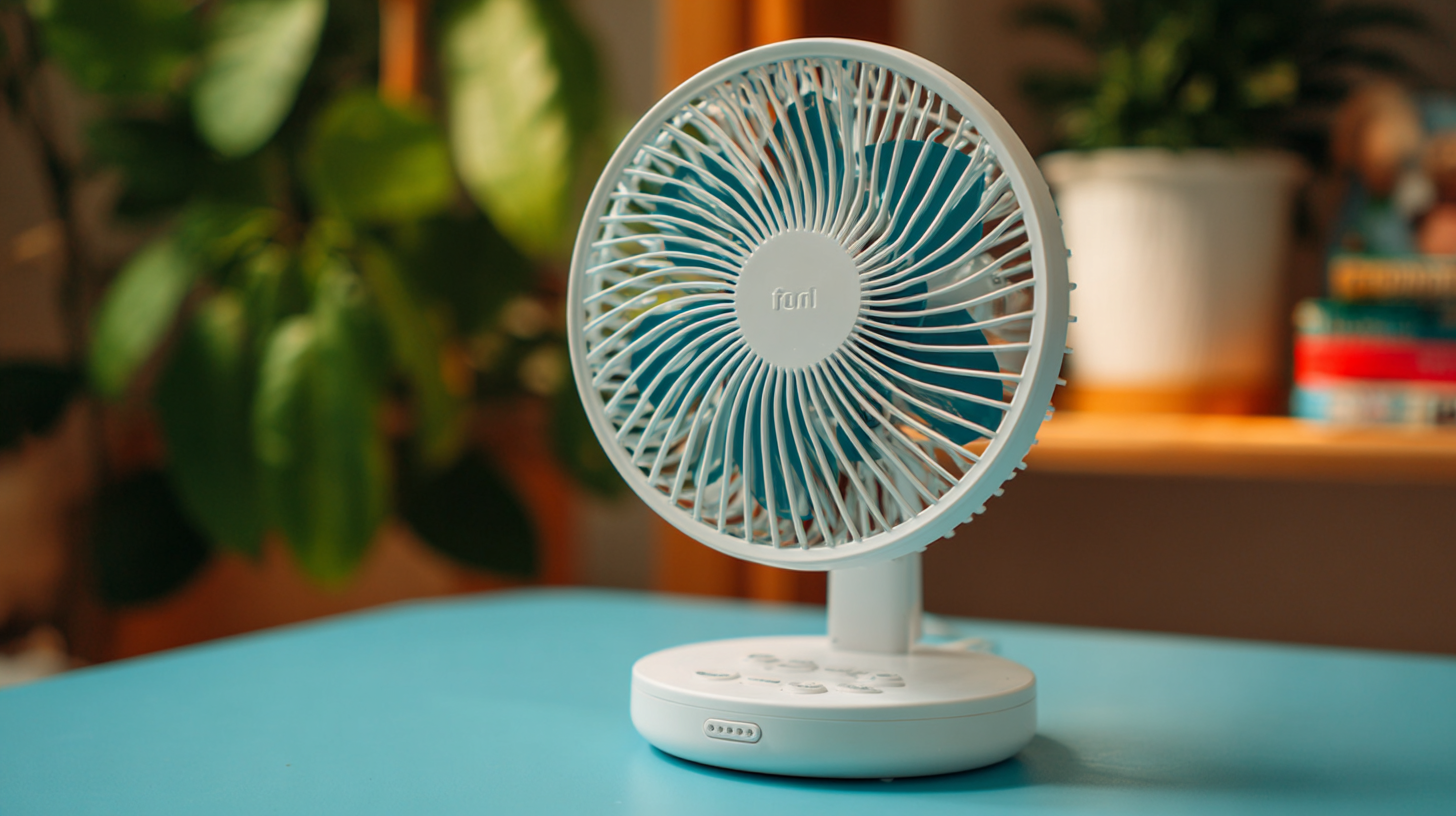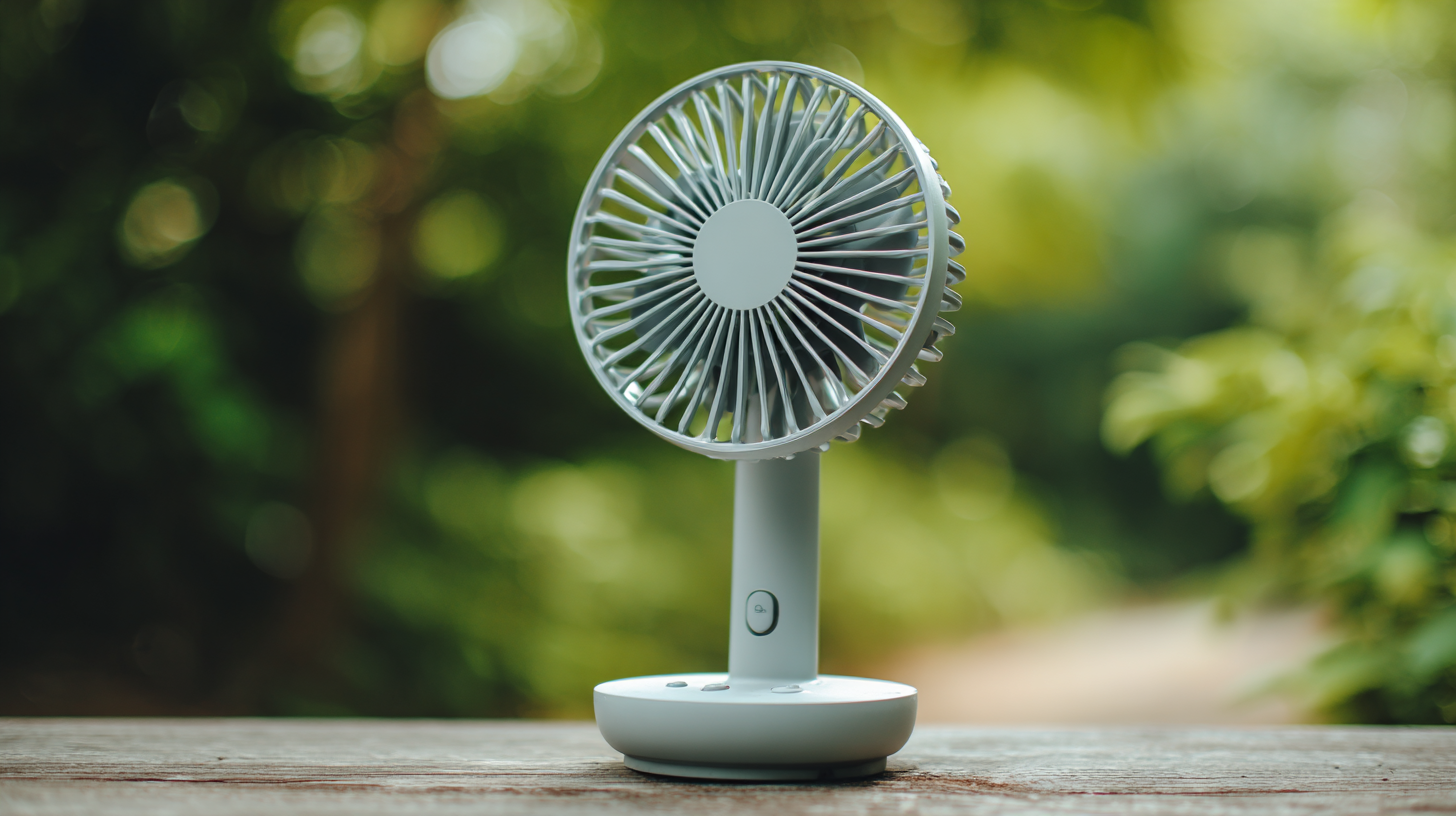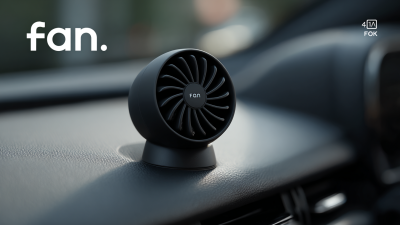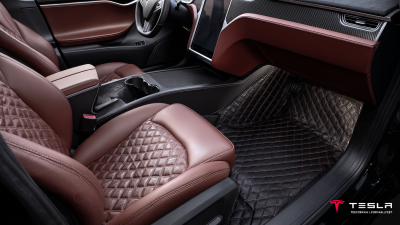When the summer heat arrives, finding ways to stay cool becomes a top priority. One effective and portable solution is the use of a portable fan. These versatile devices can provide a refreshing breeze wherever you go, whether at home, in the office, or while enjoying the great outdoors. However, with so many options on the market, choosing the right portable fan for your needs can be overwhelming.
In this guide, we will explore the top five must-know tips for selecting the best portable fan. From understanding different types of portable fans to considering features such as battery life and noise levels, we aim to equip you with the knowledge necessary to make an informed decision. Portable fans not only enhance comfort but also improve air circulation, making them an invaluable addition to your summer essentials. Get ready to discover how the right portable fan can make a significant difference in your daily life.

When selecting the best portable fan for your needs, it’s essential to understand the different types available and their specific uses. One popular option is the battery-operated fan, which is perfect for outdoor activities like camping or picnics. These fans are lightweight and often come with rechargeable batteries, ensuring you have a cool breeze wherever you go. Look for models with adjustable speeds and features like LED lights for added convenience in low-light conditions.

Another option is the table fan, ideal for personal use at home or in the office. These fans are versatile, offering oscillation and several speed settings to enhance airflow around a small space. For those needing extra portability, clip-on fans can be attached to desks or bed frames, making them great for tight spaces. Additionally, some high-tech models come with built-in misting capabilities, perfect for hot summer days. By understanding the unique features and benefits of each type, you can select a portable fan that best suits your specific needs and environment.
When selecting a portable fan, it's essential to consider several important features that can significantly enhance your experience. Firstly, the fan's size and weight are crucial, as you want something that is easy to carry and store. A compact model that can fit into a bag while still providing sufficient airflow is ideal for your travels. Additionally, check for the fan's battery life if it's cordless; a longer-lasting battery is more convenient for outdoor use.
Another key feature to look for is adjustable speed settings. This flexibility allows you to tailor the airflow according to your preference, whether you need a gentle breeze or a stronger airflow during hot weather. A fan with multiple speed options can make a big difference in comfort levels and can help in conserving battery life when on lower settings.
Lastly, consider additional functionalities like built-in LED lights or the ability to oscillate. These features add versatility to your fan, making it not only a cooling solution but also a practical tool for different scenarios. Investing time to assess these aspects will ensure you choose the best portable fan for your specific needs.
When choosing a portable fan for off-grid use, evaluating battery life and power options is crucial. According to a report by the International Energy Agency (IEA), the demand for portable energy solutions has surged, with projections suggesting a 15% annual growth rate in the global portable fan market. This underscores the need for consumers to prioritize battery efficiency and capacity when selecting a fan. For instance, fans equipped with lithium-ion batteries offer longer run times, often lasting up to 20 hours on a single charge, making them ideal for prolonged use in off-grid locations.

Furthermore, the type of power options available can significantly influence the utility of a portable fan. Many modern portable fans provide multiple charging methods, including solar panels and USB connections. A study highlighted in the Journal of Renewable Energy suggests that solar-powered fans not only reduce reliance on traditional electricity sources but also have lower operational costs in the long term. Fans that offer versatility in power sources allow users to adapt to varying energy availabilities, ensuring comfort during outdoor adventures or during power outages. Understanding these factors will help consumers make informed choices for their specific needs.
When selecting a portable fan, noise levels play a crucial role in ensuring comfort and peace of mind. According to a report by the American Society of Heating, Refrigerating and Air-Conditioning Engineers (ASHRAE), the ideal noise level for indoor fans should not exceed 50 decibels (dB) to prevent disturbances during sleep or work. Fans operating at this level are generally considered to be quiet enough to maintain a serene environment, which is especially important in small spaces or during nighttime use.
Another industry study highlights that many consumers are unaware of how different fan designs impact noise output. For instance, bladed fans typically produce more noise due to blade turbulence, while bladeless fans can operate at significantly lower noise levels—often around 40 dB or less. This difference can be pivotal for individuals who prioritize quiet operation while still enjoying effective airflow. Additionally, it's vital to test fans in real-life scenarios whenever possible; sound perception can vary greatly depending on individual sensitivity and the environment in which the fan is used.
| Tip Number | Tip Description | Noise Level (dB) | Best Use Case | Power Source |
|---|---|---|---|---|
| 1 | Select the Right Size | 30-40 dB | Personal Use | Battery or USB |
| 2 | Check Fan Speed Options | 40-50 dB | Office Desks | AC Power |
| 3 | Consider Oscillation Features | 50-55 dB | Room Air Circulation | Battery or AC |
| 4 | Look for Energy Efficiency | 25-35 dB | Travel | USB |
| 5 | Assess Portability | 35-45 dB | Outdoor Events | Battery |
| 6 | Prioritize Quiet Operation | 20-30 dB | Sleeping | AC or Battery |
| 7 | Examine Blade Material | 30-55 dB | Various Uses | AC or Battery |
| 8 | Check for Adjustable Features | 40-50 dB | Desk or Table Use | Battery or AC |
| 9 | Consider Design and Aesthetics | 25-35 dB | Home Decor | Various |
| 10 | Read User Reviews | Varies | All Purposes | AC or Battery |
When selecting a portable fan, size and weight are critical factors that directly influence its usability and convenience. According to a market report by Grand View Research, the global portable fan market is expected to reach USD 1.99 billion by 2025, highlighting the increasing demand for lightweight and compact models. A portable fan should ideally weigh no more than 2-3 pounds, making it easy to carry around, whether traveling or spending time outdoors. A fan's size should also be considered; fans with diameter dimensions ranging from 6 to 12 inches are often the most practical for personal use without compromising airflow.
Tip 1: Always check the dimensions provided by the manufacturer to ensure the fan fits comfortably in your intended space, such as a backpack or suitcase. Additionally, look for collapsible or foldable designs that enhance portability without sacrificing performance.
Tip 2: Consider battery life and energy efficiency alongside size and weight. For instance, a fan featuring a rechargeable battery can maximize the fan's portability and ensure you're not frequently searching for power outlets. According to research by the U.S. Department of Energy, energy-efficient fans can operate for longer periods, providing cooling relief during hot weather while minimizing your carbon footprint.






